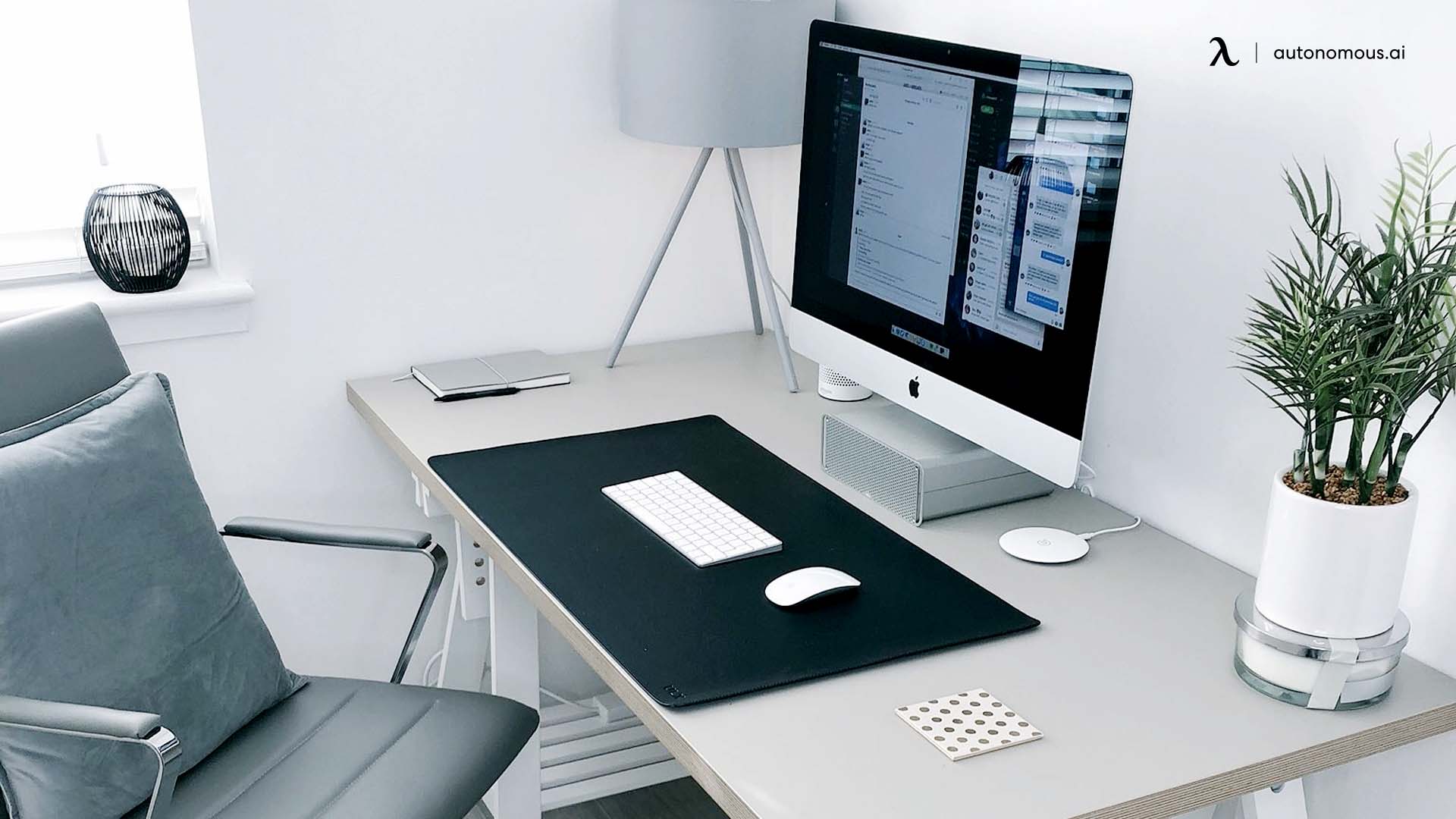/https://storage.googleapis.com/s3-autonomous-upgrade-3/static/upload/images/new_post/top-10-tips-for-working-from-home-with-a-spouse-1595.jpg)
Working from home with a spouse can be challenging for both partners. Mixing personal and work life often creates a strain and a difficulty in balancing professional and personal time. With these tips you can be sure to spend enough time with each other and strengthen your relationship while maintaining a separate and thriving professional life.
With stay-at-home measures still in place throughout the United States and numerous other countries, and many companies transitioning to fully remote work setups, many adults have chosen to save money and relieve stress by working from home full-time. For couples living together, this means a lot more time in small spaces, which can be a welcome amount of bonding time together, but can also put unexpected pressure on the relationship.
Without much preparation, many people are abruptly having to adjust to new ways of working, socializing, and connecting. Since standard Westernized working styles were designed to keep your work life and personal life more separate, how can you manage the new overlap without upsetting your loved one?
Even if you’re a seasoned pro at working from home, doing it alongside a spouse or boyfriend/girlfriend (not to mention if there are younger children) around will bring a whole new set of challenges. Before you get overwhelmed, here are tips to help you balance competing priorities, manage the stress, and remain productive without putting strain on the relationship.
Create designated work spaces

Even if you are working from a small apartment or home, do your best to create separate work spaces, even if it’s desks in opposite corners of one room or opposite ends of a table. You can even decorate your work space with the photos and knick-knacks you would regularly place on your own desk.
Designate each person’s specific area as a “work zone” with specific rules, and use it consistently. Act as if the person who is working remotely in that area is not home during their scheduled work shift.
You can even use masking tape on the floor to mark where the “walls” of your “office” begin, and consider wearing noise-cancelling headphones. You can signal a nonverbal “do not disturb” when you need quiet time, such as wearing a specific hat or tying a ribbon on the home office door.
On the flip side, remember to signal when it is okay to socialize with you, perhaps by exiting the work area or even closing your laptop, so you don’t miss out on social time.
Stick to your individual routines as much as possible

Although you are both in close quarters each day, you still deserve to start the day the way that serves you best individually. Maybe one person needs to work out in order to properly wake up, while another person needs to read the newspaper with a cup of coffee. Whatever your normal routine, don’t feel pressure to merge your mornings simply because you are in proximity.
Your daily schedule doesn’t have to bring additional pressure if you follow Autonomous’ tips for creating a balanced work from home routine. In particular, try to start your day off in a similar fashion each day, such as by making breakfast, making your bed, and getting dressed (no, not in pajamas, but actual clothes). When your individual routines overlap (say, at lunch time) treat it like a normal break in the work day by truly unplugging and relaxing, then feel empowered to return to your individual work days.
Communicate, then over-communicate

You need even more support from your loved one while isolated, and your partner may also need more attention than expected. Yet a failure to communicate effectively could bring unnecessary tension.
Although you may have already had a set pattern of home duties before the coronavirus pandemic, you should not expect that these will stay the same, since the circumstances and daily schedules have changed. Do not make any assumptions about how you will all balance chores, cooking, and home tasks. Share your ideas and pet peeves early; if you wait until you are truly frustrated, you’re more likely to become demanding or irrational.
Make sure each person also has downtime to themselves. This is especially true for smaller households and apartments, where someone cannot always move to a different room for alone time.
Work in shifts

Too many people using too few laptops? WiFi overload? Printer jamming from simultaneous print jobs?
Instead of everyone half-working, look at your schedules and split the day into shifts. An easy way to divide the day might prioritize some people’s work in the morning and some in the afternoon. Depending on work and home responsibilities, you could even segment this down to hourly shifts.
This might not be an elegant solution, but it may help to guarantee focused work while you’re “on the clock” and real relaxation time in between work periods. Be considerate and patient with your partner while you figure out the best arrangement.
Be honest with your needs
Begin the discussion by contextualizing your issues and your specific solution. Remember that this is not your personal crisis, it’s an issue affecting the entire world.
Have a candid conversation with your partner about your unique circumstances. Agree on a set of rules to follow, rather than relying on an “unspoken agreement.” Be clear with exactly what you both expect from 9AM-5PM (or your working hours). Address any parts of your job that will be impacted by working from home and confirm what tasks you can commit to, without overpromising.
If you clearly communicate your needs, not only will you make your own life easier, but you might also open the door for your loved one to participate in this conversation, and communicate transparently as a team.
Don’t be afraid to get creative with solutions. If your family needs to share computers in the mornings, consider a shifted schedule where you sign on at 11:00 AM. If family dinner is a top priority, perhaps you can promise to log on for an hour or two later in the evening to finish anything not done before 5:00 PM.
Silence is golden

It can be tempting to talk throughout the day since you normally wouldn’t get so much quality time together. It can also be tempting to put on music for you both to work to.
However, it may quickly become clear that each person has different needs and working styles, which might require different types of working music or even complete silence. Instead of getting annoyed with each other, use headphones when you are actually focused on work so that you can customize the music (or silence) to your working style.
Similarly, each person will need alone time, and cannot be made to feel guilty about it. Everyone needs a different amount of quiet time to read by themselves or take a walk, but even if one person needs more alone time than the other it is actually a healthy signal of comfort, rather than a signal that something is wrong with being around their partner.
Get the right work from home equipment

Staying productive is more than a computer and fast WiFi connection. A person's working chair and desk can play a monumental role in your productivity.
Autonomous.Ai's latest smart desk, the SmartDesk 4, is a revolutionary desk designed with productivity in mind. As an ergonomic desk, the SmartDesk 4 features several highly adjustable options for height, app reminders, and other productivity features.
Check out the Autonomous blog for tips about selecting an ergonomic chair for your particular needs, such as the ErgoChair 2, Kinn Chair, or MyoChair.
Accept that some days, you just won't work at 100%
This is an overwhelming situation, and no one is getting it completely right. You just have to do your best.
Avoid judging yourself—and your partner—on what you can get done each day. People in brand new couples and in decades-old couples—and everyone in between—are adjusting to a new normal.
Navigating change is difficult and drains mental energy. Go easy on yourself if you start to feel you are falling short.
Optimize your physical health

Managing your physical stamina and your spouse’s health is one of the most important things you can do right now.
- Stretch from time to time
- Eat healthy meals with balanced nutrition
- Sit with proper posture
- Get the right amount of sleep beforehand
- Follow the 20-20-20 rule for screen time whenever possible
Try to remind yourself that both of you will benefit from being healthier and better rested, especially in close quarters when tensions can run high.
Try to make this time special whenever possible
Sure, you may not have planned for a couple’s “staycation”, but there are some silver linings. If at all possible, make the most of the extra time with your loved one to create new memories.
Figuring out how to make the best of the situation, rather than dwelling on its challenges, might also make you more productive. Multiple studies show the positive link between happiness and productivity.
Plan breaks and downtime during the workday and after so no one feels like you’ve lost your couple connection. Try new recipes. Have a themed dinner party night. Tackle that 1500-piece puzzle. Get dressed up for your takeout dinner. Draw. Play board games. Take turns DJing your dance parties. Have an in-house scavenger hunt. Keep weekly date night traditions alive!
Bleiben Sie mit uns in Verbindung!
Abonnieren Sie unsere wöchentlichen Updates, um über unsere neuesten Innovationen und Community-Neuigkeiten auf dem Laufenden zu bleiben!



/https://storage.googleapis.com/s3-autonomous-upgrade-3/production/ecm/230914/bulk-order-sep-2023-720x1200-CTA-min.jpg)

/https://storage.googleapis.com/s3-autonomous-upgrade-3/static/upload/images/new_post_author/molly-stoneman-27.jpg)